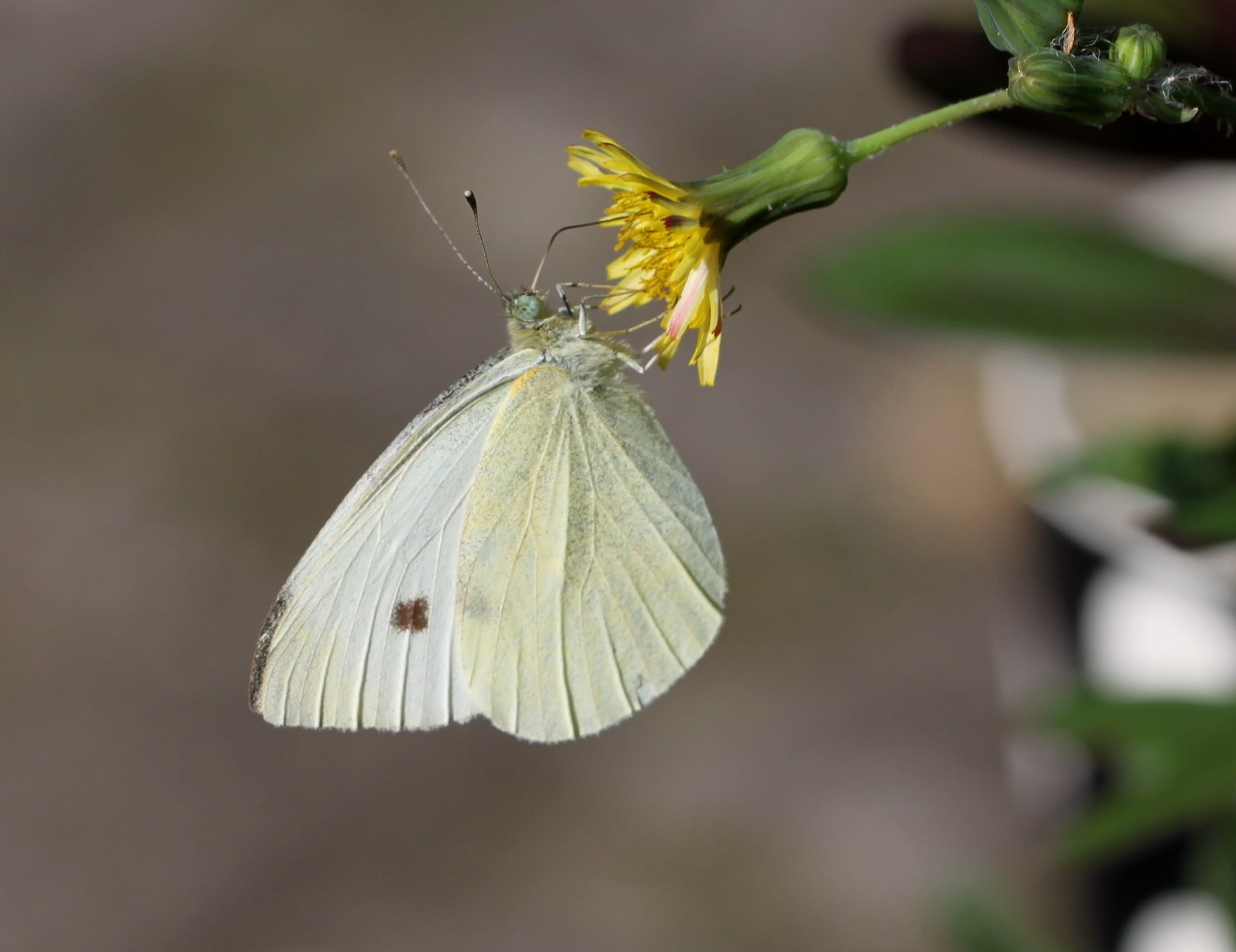.JPG)
Pieris rapae
This species lives in a loose, open population, with the adults wandering the countryside in search of nectar and suitable egg-sites.
In flight it may be confused with both Large White and Green-veined White. When perched, the green veins of the undersides of Green-veined White soon rules out that species. When separating Small and Large White it is best to check the tip of the forewing. Small White has a small amount of grey confined to the tip of the forewing, whilst Large White has a black tip to the forewing, and this black extends down both sides of the wing-tip.
The first adults usually emerge in the second half of March but most of us do not see one until April. The first brood peaks in mid-May, with the more numerous second brood emerging in late June and continuing throughout July. There may be a third brood in late summer.
Small Whites are highly migratory and it not uncommon for large flocks to arrive in high summer from mainland Europe. If a well-watched meadow has one or two Small Whites one day but one hundred are recorded the next day, then this sudden, dramatic increase is more likely to be due to a fresh migratory flock than 'home-bred' butterflies.
The largest numbers are likely to be found where Brassicas are grown, which includes allotments and vegetable gardens.
.JPG)
Male Small White nectaring on Devilsbit Scabious – photo by Martin Kalaher
.JPG)
Female nectaring on Devilsbit Scabious
.JPG)
Nectaring on Verbena Bonariensis

Nectaring on Nipplewort
.JPG)
Male nectaring on Devilsbit Scabious
.JPG)
A mating pair
Butterfly Conservation Small White